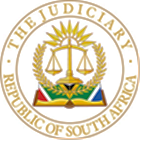
IN THE HIGH COURT OF SOUTH AFRICA
(GAUTENG DIVISION, JOHANNESBURG)
CASE NO: 19408/2021
Date of hearing: 06/02/2023
Date judgment delivered :13/04/2023
(1) REPORTABLE: NO (2) OF INTEREST TO OTHER JUDGES: NO (3) REVISED. ________________ DATE 13/04/2023 SIGNATURE
IN THE MATTER BETWEEN:
SIPELELE BATHANDWA MADIKIZELA APPLICANT
AND
THEMBA MBONGWENI NKOSI FIRST RESPONDENT
THATO SIKWANE SECOND RESPONDENT

JUDGEMENT

STRIJDOM AJ
1. The applicant sought an order interdicting the respondents from making defamatory statements against her on social media platforms, and that the first respondent be ordered to publish an apology on all his social media platforms.
2. The respondents have filed a notice of intention to oppose and opposing affidavits in terms of which they sought an order dismissing the applicant’s application and have delivered an application to strike out.
3. The respondents have raised the following points in limine:
3.1 Is the application properly before the court?
3.2 Has there been a misjoinder of the second respondent?
3.3 Is it competent to claim unliquidated damages in motion proceedings?
3.4 Has the applicant satisfied the requirements of an interim, or final interdict?
3.5 Is there a dispute of fact?
4. At the commencement of this application, I was informed by counsel for the applicant that the applicant relinquish prayers 4 and 5 of the notice of motion.
5. The issue of a misjoinder of the second respondent has been resolved as the plaintiff sought no relief against the second respondent.
6. On 20 May 2021, as a result of the applicant’s failure to comply with Rule 4 (1)(a) and Rule 6 (5)(b)(iii) of the Uniform Rules of Court, Rule 41 A (2)(a) and the Judge President’s Consolidated Directive dated 18 September 2020, the respondents launched an application to strike out the applicant’s claim in terms of Rule 30 A(b)1. The applicant had remedied her non-compliance with Rule 4 (1)(a) of the Uniform Rules of Court, and the Judge President’s Consolidated Directive dated 18 September 2020.2
7. When Rule 41A is not complied with, a party to proceedings has taken an irregular step. The respondents themselves has failed to comply with Rule 41 A (2)(b) which compels respondents to file their own notice confirming whether they agree to or oppose referral to mediation. They were equally non-compliant. What is good for the goose is good for the gander. In my view the merits of this application called for immediate resolution.
8. The principles applicable to the determination of the relevant facts when final relief is sought on motion were set out in Plascon-Evans Paints Ltd v Van Riebeeck Paints (Pty) Ltd3 as follows:
“ …where there is a dispute as to the facts a final interdict should only be granted in notice of motion proceedings if the facts as stated by the respondent together with the admitted facts in the applicant’s affidavits justify such an order…
Where it is clear that facts, though not formally admitted, cannot be denied, they must be regarded as admitted.”
9. In certain instances the denial by respondent of a fact alleged by the applicant may not be such as to: raise a real, genuine or bona fide dispute of fact. A bare denial of applicant’s material averments cannot be regarded, as sufficient to defeat applicants right to secure relief by motion proceedings in appropriate cases.
10. It is necessary to make a robust, common-sense approach to a dispute on motion as otherwise the effective functioning of the Court can be hamstrung and circumvented by the most simple and blatant stratagem. The Court must not hesitate to decide an issue of fact on affidavit merely because it would be difficult to do so.
11. I have carefully perused the affidavits and after considering the nature and extent of the factual disputes arising from the affidavits, I have come to the conclusion that it is appropriate to decide the dispute without hearing oral evidence.
12. The requirements for a final interdict are (a) a clear right, (b) an injury actually committed or reasonably apprehended and (c) the lack of an adequate alternative remedy.
13. It was submitted by the respondents that the applicant has failed to make out a case for final interdictory relief for the following reasons:
13.1 The applicant has not established a clear right.
13.2 The applicant has failed to prove that she is suffering harm (whether imminent or on-going) as a result of the alleged wrongful conduct.
13.3 In paragraph 22 of the applicant’s founding affidavit, she identifies the Protection of Harassment Act 17 of 2011 as an alternative remedy for victims of harassment.
14. The applicant is a private citizen with modest social standing. The first respondent is an adult male influential public figure more commonly known as Euphonik. He is well known in the radio and music business. The second respondent is also a public figure more commonly known as DJ Fresh.
15. During February 2021, the applicant tweeted about the month of February in Xhosa. Loosely translated to “February is so long, it feels like January, I am so broke”4. Of his own volition, the first respondent on 15 February 2021, replied to the applicant’s tweet as follows:
“Lol because being a liar and extortionist, a scammer and falsely accusing people you’ve never met isn’t profitable…Get help”
16. On 27 February 2021, the first respondent tweeted a WhatsApp message wherein he exposed the applicant’s personal cell number. The tweet read as follows:
“On a serious note, before things really get out of hand can this girl’s family and friends help her before she hurts anyone else or herself, unfortunately, my sister you’ve said and done and damaged way too much to expect any level of help from me.”5
17. In his answering affidavit the first respondent did not deny that he tweeted the impugned tweets. He merely asserts that his initial tweet was retweeted by 23 people, quoted by 11 people, and liked 74 times. As regards the tweet containing the WhatsApp screenshot with the applicant’s cell phone number, the first respondent contended that the message was only retweeted 77 times and liked 138 times.6
18. The applicant’s proposed relief is inter alia grounded on her right contained in sections, 10 and 14 of the Constitution. The rights contained in these sections are as follows:
“10 Human Dignity
Everyone has inherent dignity and the right to have their dignity respected and protected.”
“14 Privacy
Everyone has the right to privacy which shall include the right not to have-
(d) the privacy of their communications infringed.”
19. The applicant’s clear right is grounded in her constitutional right to dignity. The collective tweets by the first respondent consisted of a sustained attack against the applicant’s dignity. The suggestion that the applicant is a liar and extortionist harmed her dignity. In my view the applicant’s reputation has been irreparably harmed.
20. Although the tweet of 15 was removed from social media prior to the applicant issuing and serving the application, the applicant already suffered harm,
21. It was argued by the first respondent that on the applicant’s own version the Protection of Harassment Act 17 of 2011 (- “the Act”) affords victims of harassment effective remedies and protection against all forms of harassment including cyber bullying.
22. It was submitted by the applicant that the Act is not an adequate tool for dealing with character claims and as such, it is contended that the applicant did not have any alternative remedy. I disagree with this submission.
23. Section 2 of the Act provides that a person can apply for a Protection Order against harassment at their nearest Magistrates Court.
24. The Complainant can be harassed using verbal electronics or other forms of communication.
25. Harassment includes delivering letters, electronic mail, packages and/ or objects to the complainant or the place where the complainant works, resides, or studies.
26. The Act was enacted inter alia, to give effect to the rights of privacy, dignity, freedom and security of the person and the right to equality as enshrined in the constitution.
27. I concluded that the applicant has not established the requirement of lack of an adequate alternative remedy.
28. In the result, the application is dismissed with costs.
________________________
STRIJDOM JJ
ACTING JUDGE OF
THE HIGH COURT
OF SOUTH AFRICA
GAUTENG DIVISION
JOHANNESBURG
Heard on: 6.02.2023
Judgment on: 13.04.2023
Appearances:
Counsel for Applicant: Adv. I Tshoma
Instructed By: Kekana Hlatshwayo
Radebe Attorneys
Advocate for Respondent: Adv N Nowitz
Instructed by: Schindlers Attorneys
1 Application to Strike Out – CL 004- 38
2 See also notice of amendment – CL 008 – 1 to 3
3 1984 (3) SA 623 (A) and Stellenbosch Farmers’ Winery Ltd v Stellenvale Winery (Pty) Ltd 1957 (4) SA 234 (C) at 235 - G
4 Applicants FA, Para 11, CL 001-6
5 Applicants FA, Para 12, CL 001-6
6 First Respondent’s AA, para 19.1.3 CL 004- 23
